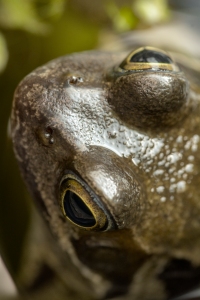At this time of year, ponds around the country are home to jelly-like masses of frogspawn and the small, wriggling tadpoles that have hatched from it. Check out our first pondwatch post and you can see frogspawn and tadpoles up close. We thought we could celebrate with some froggy activities and facts for you.
Frog Origami
Follow the video to make your own jumping frog from a suqare of paper.
Colour in the lifecycle of a common frog

Frog frogspawn to tadpole to froglet to frog, download our colouring-in sheet and colour the different stages in the life of a common frog, Rana temporaria, the most common amphibian in the UK.
Did you know? Froggy Facts
- Frogs and toads belong to a group of animals called the amphibians, alsides newts, salamanders and a group of tropical animals called the caecillians.
- Amphibians produce mucus to keep the surface of the skin moist.
- Some amphibians use some of their mucus glands to produce poison – most famous are the poison dart frogs of South America. These are some of the most toxic animals on the planet. A single 5cm long golden poison dart frog, Phyllobates ribilis, contains enough poison to kill ten grown men.
- All amphibians are able to take up oxygen and get rid of carbon dioxide through their skin. Some amphibians, such as the plethodontid salamanders, have lost their lungs altogether.
- Frogs and toads aren’t separate groups. Toad is used to describe a frog with a drier, wartier skin. Only members of the Bufonidae are classed as true toads.



3 thoughts on “Jumping for Joy: Frog crafts”